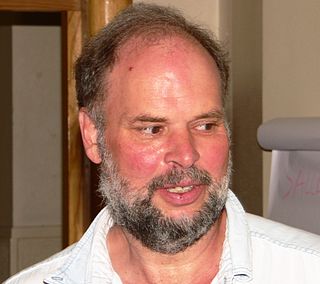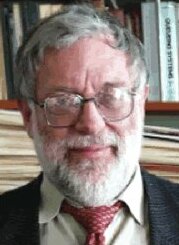Related Research Articles
Fleur Adcock was a New Zealand poet and editor. Of English and Northern Irish ancestry, Adcock lived much of her life in England. She is well-represented in New Zealand poetry anthologies, was awarded an honorary doctorate of literature from Victoria University of Wellington, and was awarded an OBE in 1996 for her contribution to New Zealand literature. In 2008 she was made a Companion of the New Zealand Order of Merit, for services to literature.

Sir Vaughan Frederick Randal Jones was a New Zealand mathematician known for his work on von Neumann algebras and knot polynomials. He was awarded a Fields Medal in 1990.

The Royal Society Te Apārangi is a not-for-profit body in New Zealand providing funding and policy advice in the fields of sciences and the humanities. These fundings are provided on behalf of the New Zealand Ministry of Business, Innovation and Employment.

Charles Edward Miller Pearce was a New Zealand/Australian mathematician. At the time of his death on 8 June 2012 he was the Elder Professor of Mathematics at the University of Adelaide.

Lloyd David Jones is a New Zealand author. His novel Mister Pip (2006) won the Commonwealth Writers' Prize and was shortlisted for the Booker Prize.

Peter Gavin Hall was an Australian researcher in probability theory and mathematical statistics. The American Statistical Association described him as one of the most influential and prolific theoretical statisticians in the history of the field. The School of Mathematics and Statistics Building at The University of Melbourne was renamed the Peter Hall building in his honour on 9 December 2016.
Estate V. Khmaladze is a Georgian statistician. He is best known for his contribution of Khmaladze transformation in statistics.
Valerie Susan Isham is a British applied probabilist and former President of the Royal Statistical Society. Isham's research interests in include point processes, spatial processes, spatio-temporal processes and population processes.
Robert Ian Goldblatt is a mathematical logician who is Emeritus Professor in the School of Mathematics and Statistics at Victoria University, Wellington, New Zealand. His doctoral advisor was Max Cresswell. His most popular books are Logics of Time and Computation and Topoi: the Categorial Analysis of Logic. He has also written a graduate level textbook on hyperreal numbers which is an introduction to nonstandard analysis.
William Henry Robinson was a New Zealand scientist and seismic engineer who invented the lead rubber bearing seismic isolation device. He grew up in West Auckland, New Zealand. He earned a master's degree at the Ardmore School of Engineering, then a PhD in physical metallurgy at the University of Illinois. Robinson was director of the DSIR's Physics and Engineering Laboratory between 1985 and 1991. He continued to invent and develop seismic isolation devices, travel and lecture until his early 70s.

Sir Thomas Hill Easterfield was born in Doncaster the youngest of four children of Edward Easterfield, savings bank secretary, and Susan. He attended Doncaster Grammar School, and later entered the Yorkshire College of Science, now the University of Leeds. He was then appointed a Senior Foundation Scholar of Clare College, Cambridge, from where he gained First Class honours in the Natural Sciences Tripos in 1886.

Rodney Graham Downey is a New Zealand and Australian mathematician and computer scientist, an emeritus professor in the School of Mathematics and Statistics at Victoria University of Wellington in New Zealand. He is known for his work in mathematical logic and computational complexity theory, and in particular for founding the field of parameterised complexity together with Michael Fellows.

Michael Anthony Steel is a New Zealand mathematician and statistician, a Distinguished Professor of mathematics and statistics and the Director of the Biomathematics Research Centre at the University of Canterbury in Christchurch, New Zealand. He is known for his research on modeling and reconstructing evolutionary trees.
Michael Charles Corballis was a New Zealand and Canadian psychologist and author. He was Emeritus Professor at the Department of Psychology at the University of Auckland. His fields of research were cognitive psychology and cognitive neuroscience, encompassing visual perception, visual imagery, attention, memory, and the evolution of language.
Peter Bernard David de la Mare was a New Zealand physical organic chemist.
Richard Irving Walcott is a New Zealand geologist known for his work on plate tectonics.

Jeffery Lewis Tallon is a New Zealand physicist specialising in high-temperature superconductors.
Peter Vere-Jones was an English-born-New Zealand actor. He was known for his collaborations with director Peter Jackson, appearing in four of his films. He was also known for starring in the New Zealand television series Shortland Street.
Mary Morris Cresswell is a poet and science writer living on the Kāpiti Coast, New Zealand.
Hugh Mannering Bibby is a New Zealand geophysicist. He holds the position of emeritus geophysicist at the New Zealand research institute GNS Science.
References
- ↑ "Professor David Vere-Jones" (PDF). New Zealand Mathematical Society. 1982. Retrieved 30 March 2024.
- ↑ "David Vere Jones in the UK and Ireland, incoming passenger lists, 1878–1960" . Ancestry.com Operations. 2008. Retrieved 4 November 2024.
- ↑ "David Vere Jones in the England & Wales, civil registration birth index, 1916–2007" . Ancestry.com Operations. Retrieved 4 November 2024.
- ↑ "NZ university graduates 1870–1961: U–Wh". Shadows of Time. Retrieved 4 November 2024.
- ↑ "Rhodes scholars selected". The Press . Vol. 96, no. 28451. 4 December 1957. p. 14. Retrieved 4 November 2024– via PapersPast.
- ↑ "David Vere-Jones". Mathematics Genealogy Project.
- ↑ "New Zealand Mathematical Society Newsletter". August 1982.
- ↑ "David Vere-Jones obituary". The New Zealand Herald . 4 November 2024. Retrieved 4 November 2024.
- ↑ ""2014 Jones Medal: A lifetime of statistics"". Royal Society Te Apārangi. 26 November 2014.